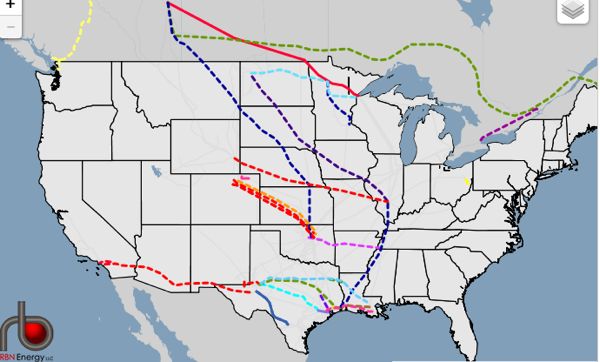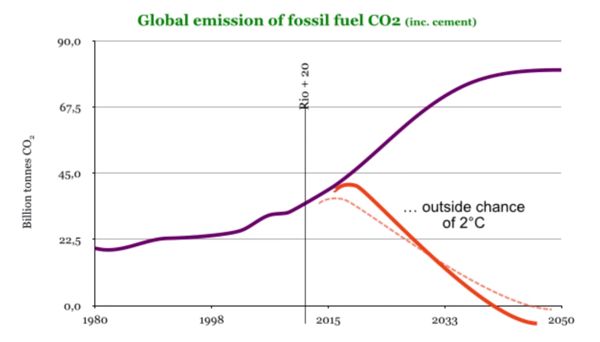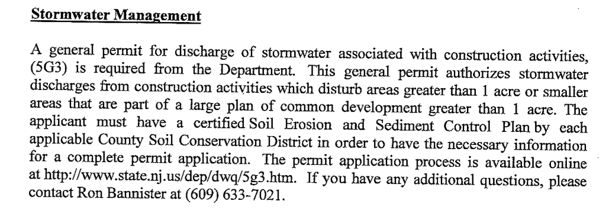Instead of Rubber Stamping Gas Pipelines and Subsidizing The Energy Industry, Here’s What FERC Should Be Doing On Climate Change
How FERC Can Reduce Greenhouse Gas Emissions & Promote Renewable Energy
I’ve described the byzantine and significantly privatized federal and state regulatory framework for energy as the “Twilight Zone”.
The Christie State BPU is run by a former energy industry lobbyist, while the Federal Energy Regulatory Commission (FERC) is “captured” by the energy industry it regulates and promotes and serves the energy industry’s interests, not the public interest. Therefore, participation in the FERC review process is a joke and waste of time. That view is shared by many others:
we were unable to find a single FERC denial of an application for a Certificate of Public Convenience and Necessity for an interstate gas transmission line.
Just this morning, I came upon another example of the degree of FERC’s capture, as FERC reversed its historical policy and will now allow gas companies to pass through to consumers the costs of complying with EPA and other regulations – that’s right: they impose risk and pollute and profit, while we pay for protections, see:
20. Accordingly, the Commission proposes to establish a policy outlining the analytical framework for evaluating proposed cost recovery mechanisms to recoup infrastructure modernization costs necessary for the efficient and safe operation of the pipeline’s system and compliance with new regulations.
Given those fatally flawed federal regulatory conditions – and the proliferation of pipelines and other fossil fuel energy infrastructure under FERC’s jurisdiction – in my view, a State government strategy is required and a moratorium at the State level is justified until the non-prempted State safeguards are developed.
The only state regulatory tools I’ve found that are not preempted are delegated Clean Water Act and Coastal Zone Management Act powers.
Obviously, a State moratorium is a radical approach – which I think is completely justified given the climate emergency and the rate and sheer scale of the fossil energy industry’s expansion.
But, aside from the State strategy, if FERC were serious about climate change, even incremental federal regulatory reforms are feasible – if demanded by public pressure and political leadership – if FERC were serious about climate change.
Although there are huge project specific political battles and environmental campaigns going on in communities across the country, I see little evidence that people want to change the policies and rules of the game FERC operates under.
That is the typical failed environmental strategy: invest in single battles, while ignoring the regulatory framework that virtually guarantees you will lose that battle.
Very few activists or people are even aware of the rules, never mind how to change the rules of the game that dictate consistently losing outcomes.
The energy industry surely knows better, that’s why they invest tremendous resources in controlling the regulatory apparatus that guarantees their profits and assures that the public and the environment get screwed.
But, in a refreshing counter to the energy industry regulatory capture agenda, a recent Report from Berkeley Law School “How FERC Can Use Its Existing Legal Authority To Reduce Greenhouse Gas Emissions and Increase Clean Energy Use” lays out a FERC reform agenda.
According to the Report, FERC could (verbatim text from the Report)
- Promote greater use of clean energy sources. FERC can reduce fossil fuel generation by including a carbon adder, reflecting the cost of climate and other environmental damage caused by electricity generation’s carbon dioxide emissions, in wholesale electricity rates.
[I can’t help but note here that the Christie NJ BPU is going in the opposite direction – one recent example is the BPU April 2013 Order that exempted the BL England power plant from paying Societal Benefits Charge (SBC), capital investment & energy efficiency surcharges, and RGGI allowances. Similarly, the BPU wind “cost test” methodology that is being used to kill off shore wind fails to account for the social costs of carbon – as does virtually every other BPU decision.]
- Encourage increased development of renewable power systems. FERC can promote more renewable generation by facilitating the development and use of feed-in tariffs that guarantee renewable generators a specified price for their power.
- Support the use of hydrokinetic resources, particularly ocean energy resources. FERC can encourage the development of offshore hydrokinetic projects by simplifying the approvals process for such projects.
- Encourage expansion of the transmission grid to connect areas with high renewable energy potential to load centers. FERC can require electric utilities to expand their transmission capacity to serve renewable power systems. Additionally, FERC can encourage utilities to voluntarily invest in such expansions by changing its transmission cost recovery rules to allow for broader allocation of investment costs.
- Promote integrated resource planning that considers both supply- and demand-side options for meeting future electricity requirements. By encouraging utilities to consider all possible resource options, integrated resource planning may lead to greater use of renewable generation, energy efficiency, and other environmentally friendly resources. Recognizing this, FERC may require utilities to adopt a fully integrated approach when preparing regional transmission plans. Additionally, FERC can also foster greater cooperation and information sharing between utilities during the planning process.
- Reduce the natural gas industry’s climate impacts. FERC can mitigate greenhouse gas emissions from natural gas production, transportation, and use by requiring natural gas companies to report on the climate impacts of their operations and to take appropriate steps to minimize those impacts.
FERC is NOT going to do any of this without enormous public pressure to change policies.
But I see no evidence of focused public pressure – and I see no public interest, climate, or environmental groups even working on this kind of federal regulatory policy reform (or the State moratorium/safeguards strategy either).
Since there is virtually zero chance of Congress acting on climate, energy, or the public interest – the Bernie Sanders “Leave it in the Ground” Senate bill was another political stunt, as was Obama’s big PR on killing Keystone XL – the only question in my mind is whether activists should pursue a radical State moratorium strategy or focus on incremental FERC (and EPA) regulatory reforms.
The system is badly broken – either take direct acton to shut it down, or fix it.
Time to choose.



